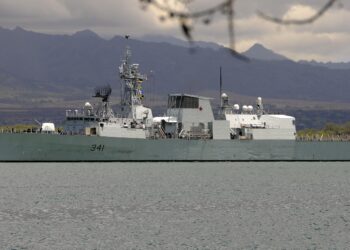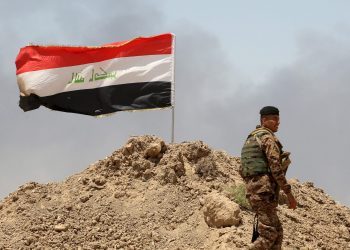US Department of Defense, WASHINGTON: The services are working to better coordinate operations when more than one service is firing on a common target.
The Joint Fires Integration and Interoperability Team is working to “investigate, assess and improve the effectiveness of 'joint fires,'” the team's commander said at the 2005 Joint Warfare Conference here Oct. 25. The team also has worked to revise joint fire manuals.
Joint fires are defined as “two or more services using lethal and non-lethal weapons in coordinated action toward a common target,” according to the JFIIT Web site. The ultimate goal is to use overwhelming combat power to neutralize the target. JFIIT was stood up as a subordinate command of U.S. Joint Forces Command in February 2005 at the direction of Navy Adm. Edmund P. Giambastiani, then JFCOM commander. Giambastiani is now vice chairman of the Joint Chiefs of Staff.
The joint fires team is working on joint training, standardization and doctrine issues. It also takes actions to help bring tactics, techniques and procedures, as well as equipment and systems, in line among the services, Air Force Col. David Brown, Joint Fires Integration and Interoperability Team commander, said at the conference.
“If you are talking transformation, specifically transforming in a time of war, you cannot cut corners on any (of those),” Brown said. There have been systems that were about to be fielded without much thought as to how they were going to be used or about applicable training and procedures for using them, he explained.
Most of the issues Brown's team handles come from those who know first-hand. The team deals mostly with service members just back from Iraq or Afghanistan and, in some cases, contractors who have been in the fight.
So far JFIIT, made up of representatives of each military service and civilian contractors, has only deployed within the United States, Brown said. It is, however, approaching deployment to the U.S. Central Command theater with JFCOM's lessons-learned program.
To accomplish its mission of seeing that services and systems work together, JFIIT participates in events like Operation Urgent Quest, a combined training exercise that recently took place in the United Kingdom.
“It was a large exercise involving 16 coalition partners,” Brown said. He described the exercise as “a combat identification exercise where we have force-on-force training.”
“Then we looked at various technologies that would allow either operators or systems to identify: 'Is that a friendly person?'” Brown said.
JFIIT assisted the 4th Infantry Division with enhancing tactics, techniques and procedures for joint intelligence, surveillance and reconnaissance capabilities to support targeting in preparation for a return to Iraq, Brown said.
Taiwan detects 24 Chinese aircraft as Canadian ship transits waters
Taiwan said it detected 24 Chinese military aircraft near the island on Sunday as a Canadian warship passed through the...









